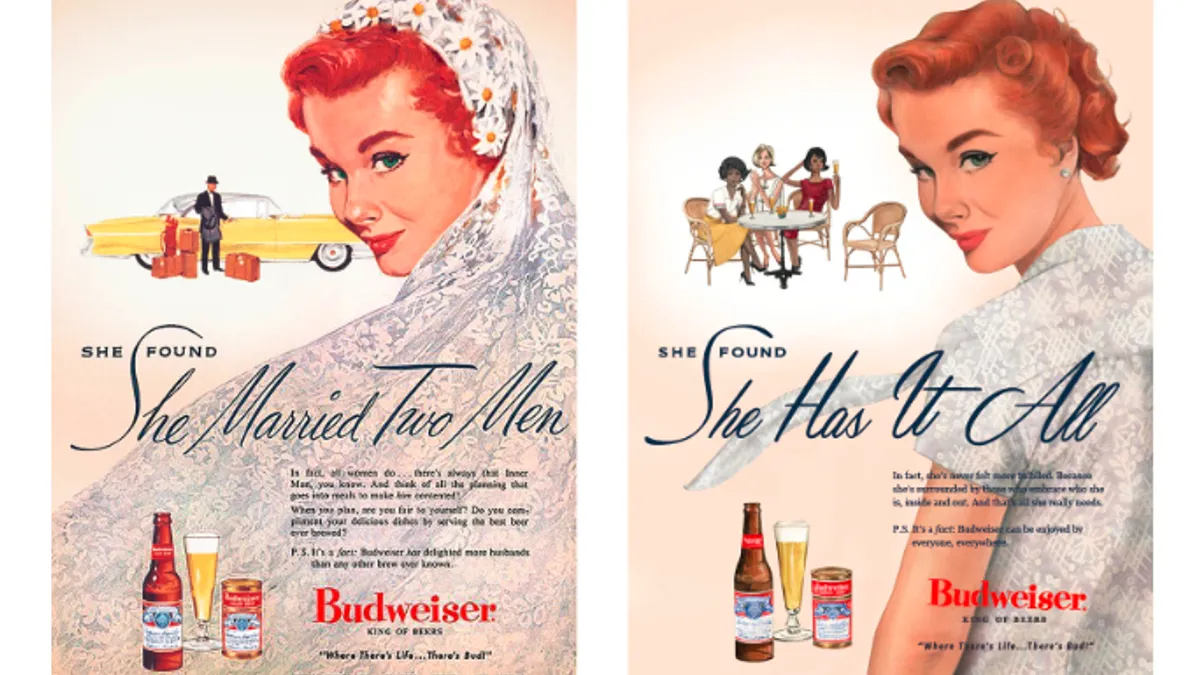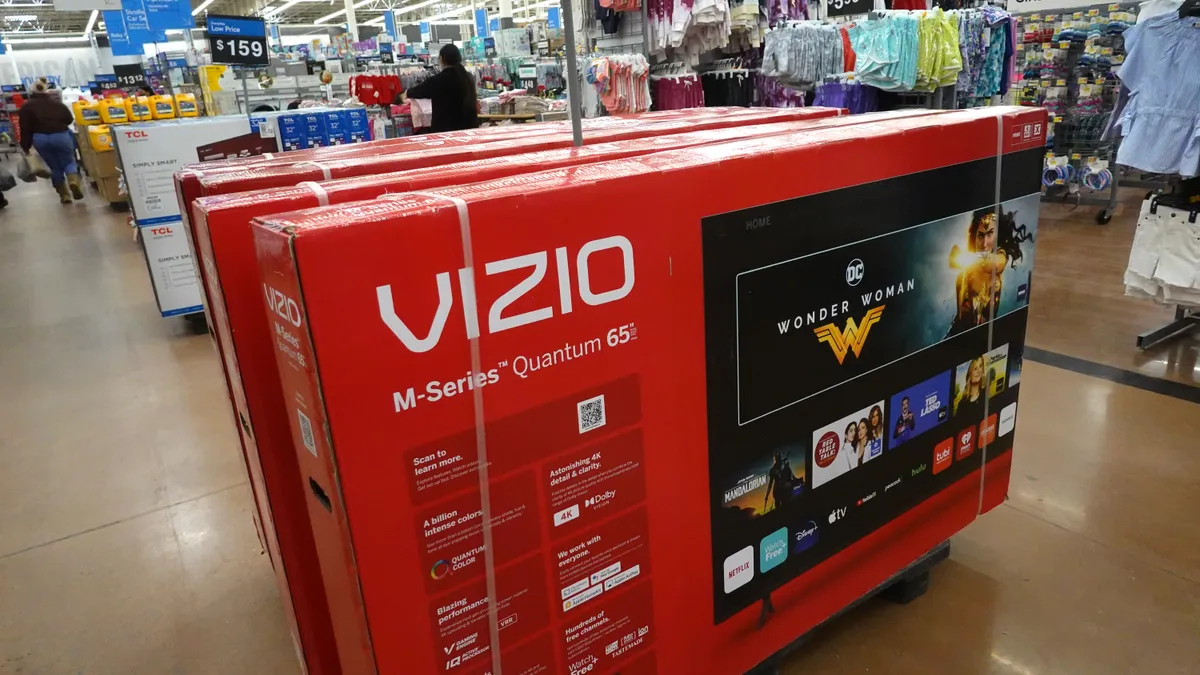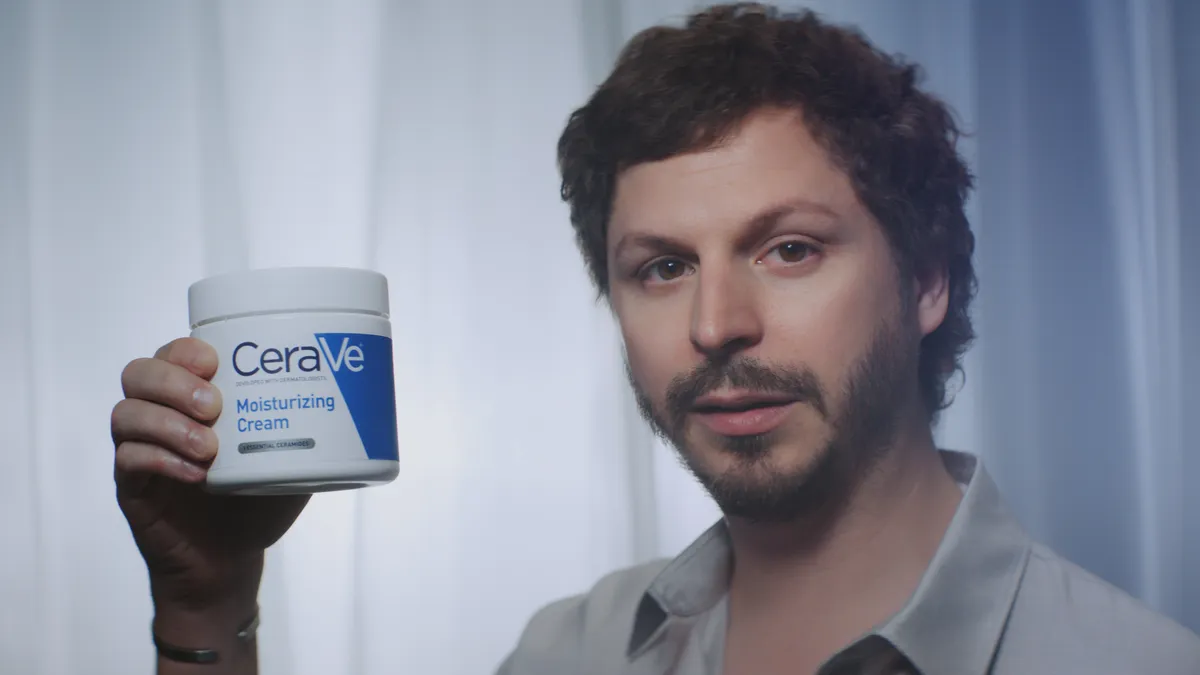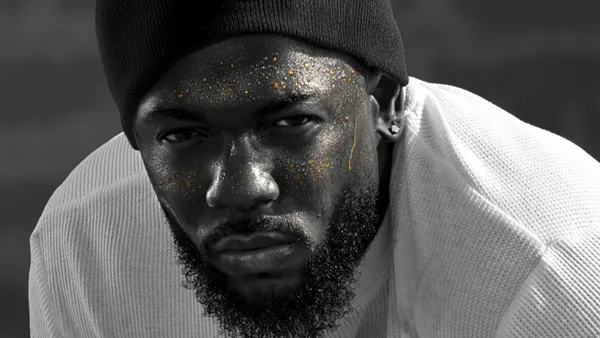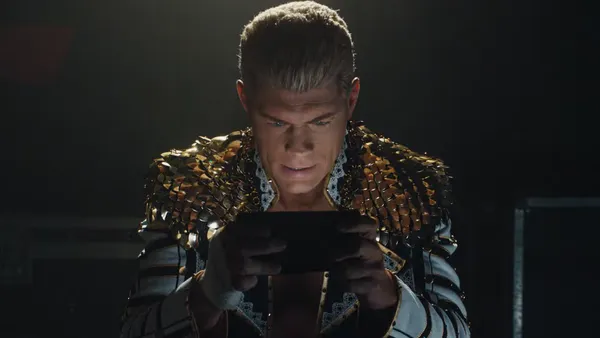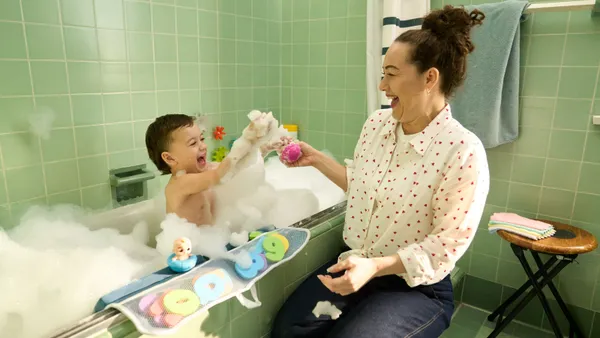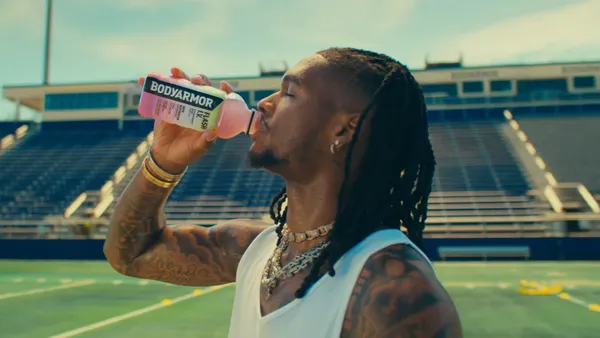Dive Brief:
- A positive depiction of women in ads for six major CPG marketers led to increased purchase intent and drove a sales lift, per an IRI report done in partnership with the Association of National Advertisers (ANA). The research is based on an index called Gender Equality Measure (GEM), developed by ANA's SeeHer initiative to advance gender equality in advertising. The participating marketers are Anheuser-Busch, Clorox, Hershey, Kellogg's, Keurig Dr. Pepper and L'Oréal.
- The study, examining 18 different pieces of creative and 428 TV programs, found that ads with the highest sales lift had the highest GEM scores, and that creative with GEM scores over 100 drove sales bumps up to five times higher than ads with scores below 100. An even greater sales lift occurred when ads with the highest GEM scores were incorporated into programs with similarly high scores.
- Seventy percent of TV shows with highest sales lift, including "Early Today," "Today with Kathie Lee & Hoda" and "Blue Bloods," were high GEM scorers. Two commercials for Kellogg's Special K brand that generated the largest sales increase — "Own It" from 2017 and "Eat Special to Feel Special" from 2015 — also ranked the highest based on GEM scores.
Dive Insight:
The IRI/ANA research provides meaningful insight into how advertising that portrays women in an authentic and positive manner can drive results for brands, arriving as the marketing industry is placing a bigger focus on social issues many consumers care about, such as gender equality, inclusivity and diversity.
According to separate research from Unilever, 40% of women don't identify with the women they see in ads. Additionally, 55% of adults believe women are portrayed negatively in the media, per Tivo research cited by ANA. Findings such as these prompted ANA's SeeHer to investigate how women's portrayal in media impacts sales.
The GEM score featured in the research is based on measurements of four consumer reactions to the depiction of women in advertising: opinion of female character presented, whether characters are shown in a respectful manner, if they're shown in an inappropriate manner and if the characters are viewed as a positive role model.
Amid consumer calls for gender equality, a number of brands and agencies are examining their campaigns for bias. Mars recently analyzed its ads to find that men outnumbered women three to two and pledged to address the obvious discrepancy. Budweiser also reckoned with a sexist advertising past by remaking ads from the '50s in partnership with SeeHer. Other brands looking to dismantle gender bias include Mercedes-Benz and Mattel, which recently partnered to give girls car toys to combat stereotypes, in a spot called "No Limits."
Facebook research from 2017 supports the idea that consumers respond positively to gender positivity, while Choozle made the case that advertisements can play a role in shifting gender stereotypes. However, brands trying to inject positive portrayals of women in their ads must be wary of appearing inauthentic if their appeal comes without real action. Nike received backlash around its "Dream Crazier" effort featuring Serena Williams' rise to tennis stardom, after several Nike athletes reported financial penalties from the brand when they became pregnant, per The New York Times.
Amid industry support for ads promoting positive depictions of gender, there's also a growing backlash against ads that do the opposite. The U.K. banned "harmful" gender stereotypes in advertisements on June 14. According to The New York Times, the U.K. guidelines were developed after a study found that gender-stereotypical imagery and rhetoric "can lead to unequal gender outcomes in public and private aspects of people's lives."


